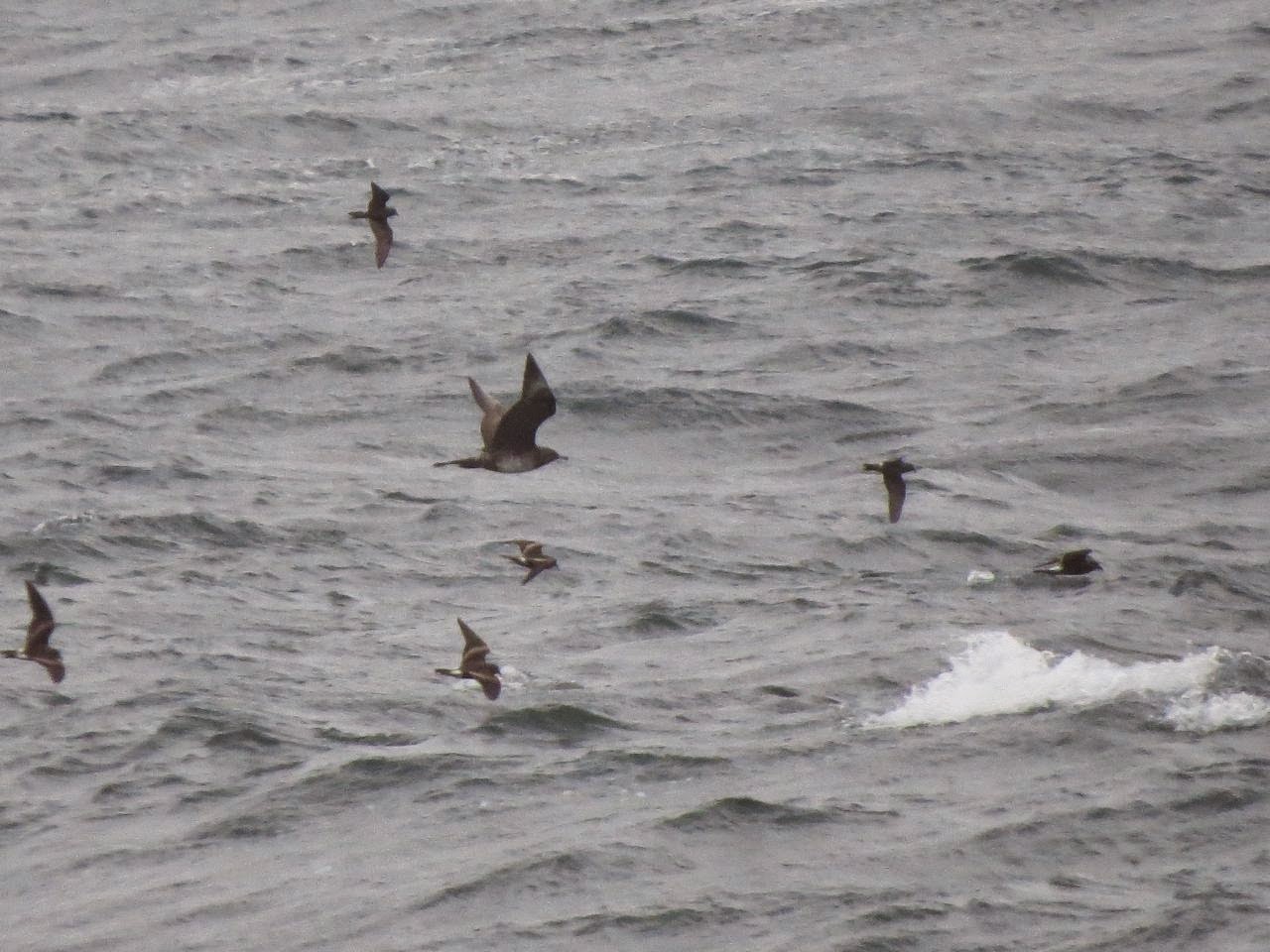One of the first birds I saw was this Short-billed Dowitcher roosting on a soccer field with a few Black-bellied Plovers. I'm pretty sure it's a juvenile. But what's interesting is that some of the scapular feathers are grey, indicating that it's moulting into non-breeding plumage. The time of year for the moult isn't unusual, it's just unusual to see a moulting SB Dow during migration. Oftentimes, a moulting dowitcher is the first indication that you have a Long-billed. Not this time unfortunately!
The second stop had another juvenile SB Dow. This one hadn't started moulting yet:
The tertials are relatively bland for a Short-billed. But not bland enough for a Long-billed I think...
Seems that there are quite a few Great Cormorants in this area. They're still out-numbered by Double-cresteds, but definitely more common than on the avalon peninsula:
Community of Grand Bank:
Not many trees!!
A fair number of Blackpoll Warblers were present yesterday:
A rare/uncommon Great Blue Heron was near the town:
The best place I've visited so far was definitely the "L'anse-aux-Loop T". The place has a large tidal flat with many mussels. I saw 12 species of shorebird at this location, highlighted by 2 Red Knots, and a single Buff-breasted Sandpiper this morning.
Juvenile Dunlin are unique among shorebirds in that they begin their moult into non-breeding plumage before starting their southbound migration. And they continue to replace scapulars and other feathers, throughout migration. They can be distinguished from adults by the retained wing coverts which are still pale-fringed:
There are still quite a few adult White-rumped Sandpipers here. They were getting to be quite rare on the avalon last week, so maybe these ones found a good spot and decided to stay for a little longer while the feeding is good:
Another adult White-rumped:
I didn't get any nice photos of juvenile White-rumpeds. But this photo has an adult and a juvenile. Adult is on the left, juvenile on the right:
The highlight for me was the opportunity to photograph 2 tame juvenile Red Knots with the sun setting behind me:
Red Knots are uncommon passage migrants in Newfoundland. These ones were only my 6th and 7th for the year:
While photographing the knots, this juvenile Black-bellied Plover must have realized that I wasn't much of a threat and came rather close for the species:
To top things off, I was lucky to find a tame juvenile American Golden-plover earlier this week on a baseball field in St. John's:
juvenile BB and AMGPs are often confused. Note the smaller thinner bill, longer primary extension beyond the tertials, and more pronounced white eyebrow of the American GP versus the BBPL:
Habitat can be a pretty good clue as well. AMGPs are usually found on fields, whereas BBPLs are usually found around rocky shores. However, I have seen both species in the opposite habitat so don't rely on the habitat alone for ID purposes.

















































